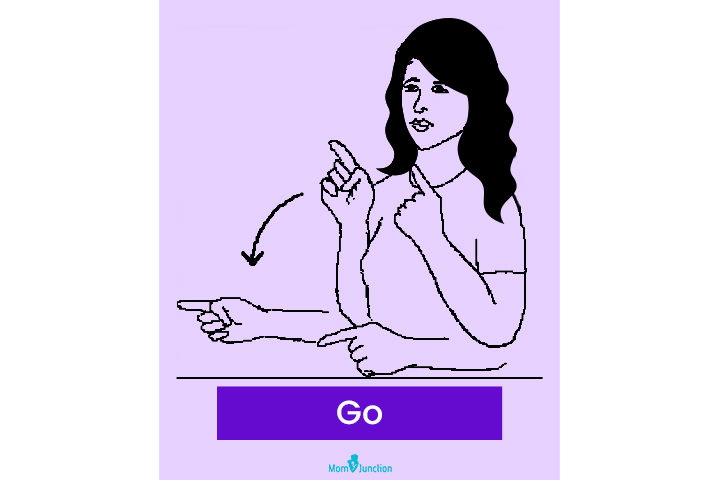The world of communication extends far beyond spoken words, embracing the expressive language of signs and gestures. Among the many gestures we use, “let’s go” holds a ubiquitous place, transcending cultural and linguistic barriers. In the realm of sign language, this ubiquitous phrase finds its unique expression, offering a window into the captivating world of non-verbal communication.

Image: www.momjunction.com
Sign language, with its distinct vocabulary and grammar, provides a means of communication for individuals who are deaf or hard of hearing. It empowers them to engage in meaningful conversations, share ideas, and fully participate in society. The ability to express “let’s go” in sign language not only fosters inclusivity but also enriches our understanding of human communication.
The Sign for “Let’s Go”
To convey “let’s go” in sign language, a simple yet expressive gesture is employed. The dominant hand, with fingers extended, moves forward with a slight upward motion, as if beckoning someone to accompany you. The palm of the hand faces the person you are addressing, inviting them to join you on your journey.
This sign can be modified to convey different nuances. For instance, a stronger upward motion implies a sense of urgency or haste, while a slower, more deliberate movement suggests a more relaxed and casual invitation. Additionally, the direction of the hand movement can be adjusted to indicate the specific direction you want to go.
Historical Evolution of the Sign
The sign for “let’s go” has evolved over time, reflecting the cultural influences and linguistic subtleties that shape sign language. In early forms of sign language, the gesture simply involved pointing in the direction one wanted to go. However, over time, the sign became more elaborate and expressive, incorporating the concept of “coming together” or “joining.”
This evolution parallels the gradual shift in language from concrete gestures to more abstract and symbolic representations. As sign language gained recognition and became more widely used, the need for a distinct and universally understood sign for “let’s go” became apparent, leading to the standardization of the current gesture.
Applications in Real-Life Situations
The sign for “let’s go” finds practical applications in various real-life settings. It allows deaf or hard of hearing individuals to navigate social interactions, express their intentions, and engage with the world around them.
In educational contexts, the sign for “let’s go” facilitates smooth classroom transitions and promotes inclusivity among students with diverse communication needs. It ensures that all students feel included and respected, providing an equitable learning environment for all.

Image: www.youtube.com
How To Say Let’S Go In Sign Language
https://youtube.com/watch?v=CMcKRoHzZ1A
Conclusion
Sign language offers a unique and powerful way to communicate, providing a bridge between individuals who may otherwise face barriers in verbal communication. The sign for “let’s go” exemplifies the expressive nature of sign language, elegantly conveying the desire to move forward together. Whether used in everyday conversations or formal settings, this gesture fosters inclusivity, promotes understanding, and opens doors to a world of meaningful connections.